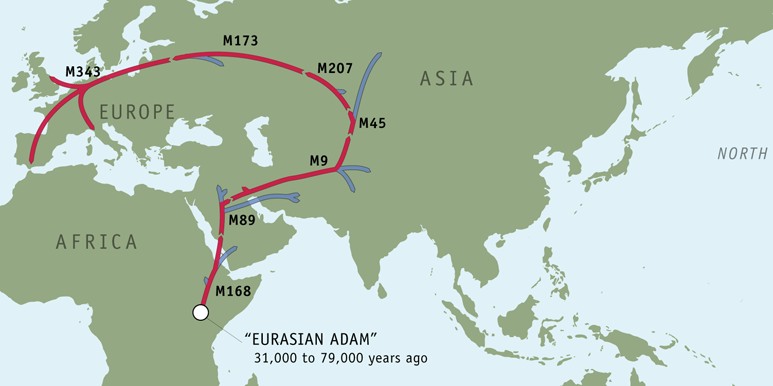
Genographic Project - Mapping our footsteps
As a partnership between the National Geographic Society and the IBM Corporation, the Genographic Project aims to map the migratory history of mankind by studying variations in DNA patterns over time. As part of the study, over 170,000 individuals, including over 12,000 IBMers, have contributed their own DNA samples to learn more about the journey that their ancestors took through time and across the planet.
Each of us carries DNA that is a combination of genes passed from both our mother and father, giving us traits that range from eye color and height to athleticism and disease susceptibility. One exception is the Y chromosome, which is passed directly from father to son, unchanged, from generation to generation.
The map below depicts the ancestral migration history of David Tafel of Newtown, PA. The study identified my genetic pattern to be a member of the haplogroup R1b ancestral clan.

The map highlights my ancestor's migration route with the haplogroup R1B Y-chromosome markers: M168, M89, M9, M45, M207, M173, M343. The earliest ancestor on the map is noted by the M168 marker. Scientists place the man associated with the first genetic marker (M168) in my lineage to have lived approximately 50,000 years ago. He was from the area now known as Ethiopia, Kenya, or Tanzania. His descendants became the only lineage to survive outside of Africa. As a result, he is the common ancestor to every non-African man living today.
In following my ancestor's migration route in the map above leads to the M343 marker. The man associated with the M343 marker was stated to have lived approximately 30,000 years ago. This Y-chromosome marker (M343) makes me a direct descendant of the Cro-Magnon. The Cro-Magnon are the people who dominated the human expansion into Europe. The Cro-Magnon created the famous cave paintings found in southern France. These paintings provided archaeological evidence of a blossoming artistic skill of the people who were moving into Europe.
Today, approximately 70 percent of the men in southern England are members of the haplogroup R1B ancestral clan. In parts of Spain and Ireland, the number of hapolgroup R1B exceeds 90 percent.
As my genetic trails ends here, one can see how this migration into Europe would connect to our family records dating back to 1612 in Germany.
If you would like more detailed information on my genetic history, click on this link. If you would like more detail information on my genetic sequence, click on this link.